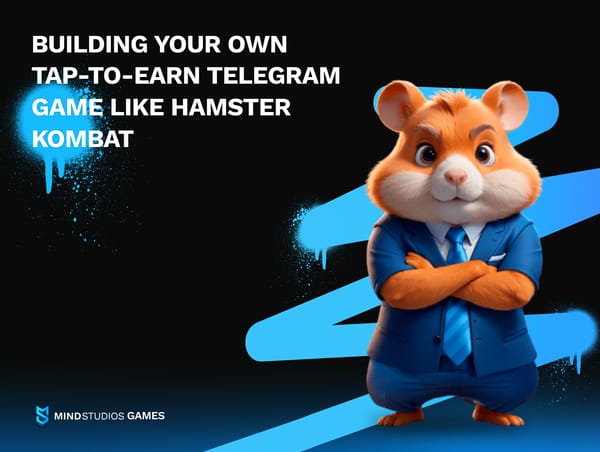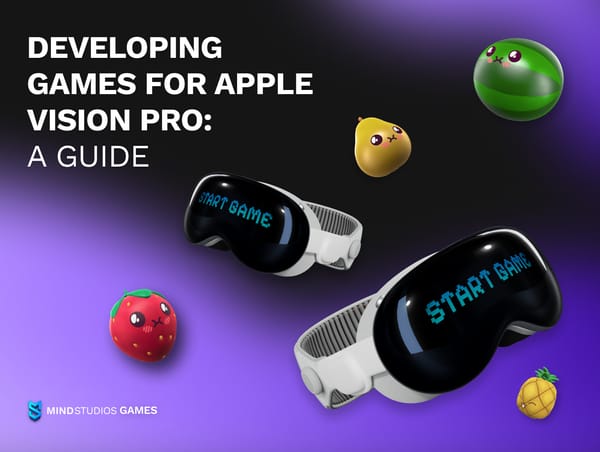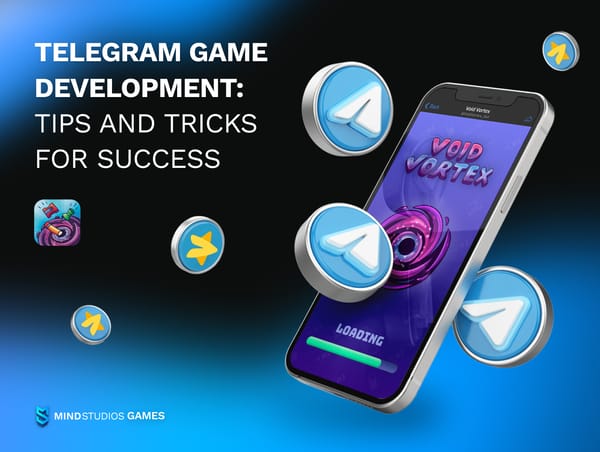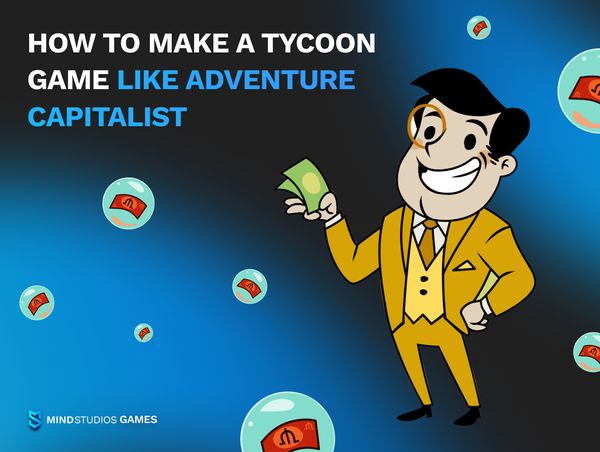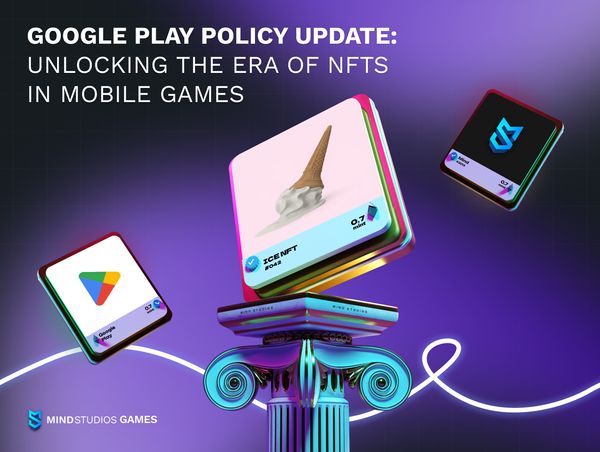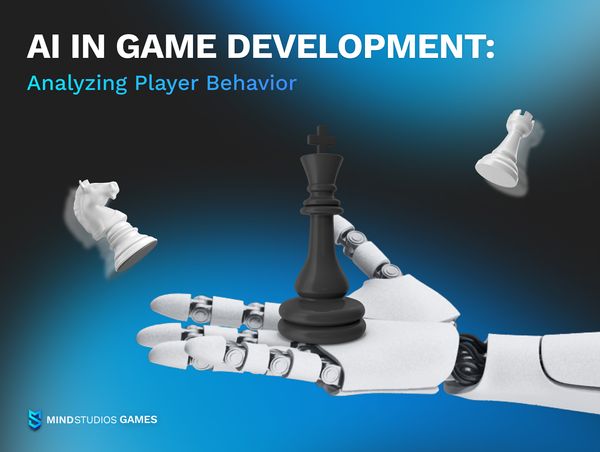Video game animation is something a game can hardly do without these days. It’s not unheard of for players to take notice of poor animation, even when you’ve got superb graphics in your game. Animation enlivens the game, increases immersion and engagement, and helps you give players the experience that will captivate them for a while.
Whether your game is 2D or 3D, simple or complex, regardless of the genre and type — to attract players and to keep them, you’ll need to invest in gaming animation.
This article will touch upon our experience with animating the works of our artists and 3D modeling specialists, whom we asked for input and to share their knowledge.

Being in the mobile game development industry for some time already, they have worked in a variety of styles, both 2D and 3D, realistic and cartoonish, even anime.
As a mobile game development company, we’ve got a somewhat niche expertise, focused on mobile games. However, the process of mobile video game animation is essentially the same as animation for PC/console or even movies. The specifics of mobile platforms come into play at a later stage, posing unique challenges for animation specialists. We will cover those in this article as well. And if you have specific questions this article doesn’t answer, drop by our contact form with them ;)
How does video game animation affect game performance?
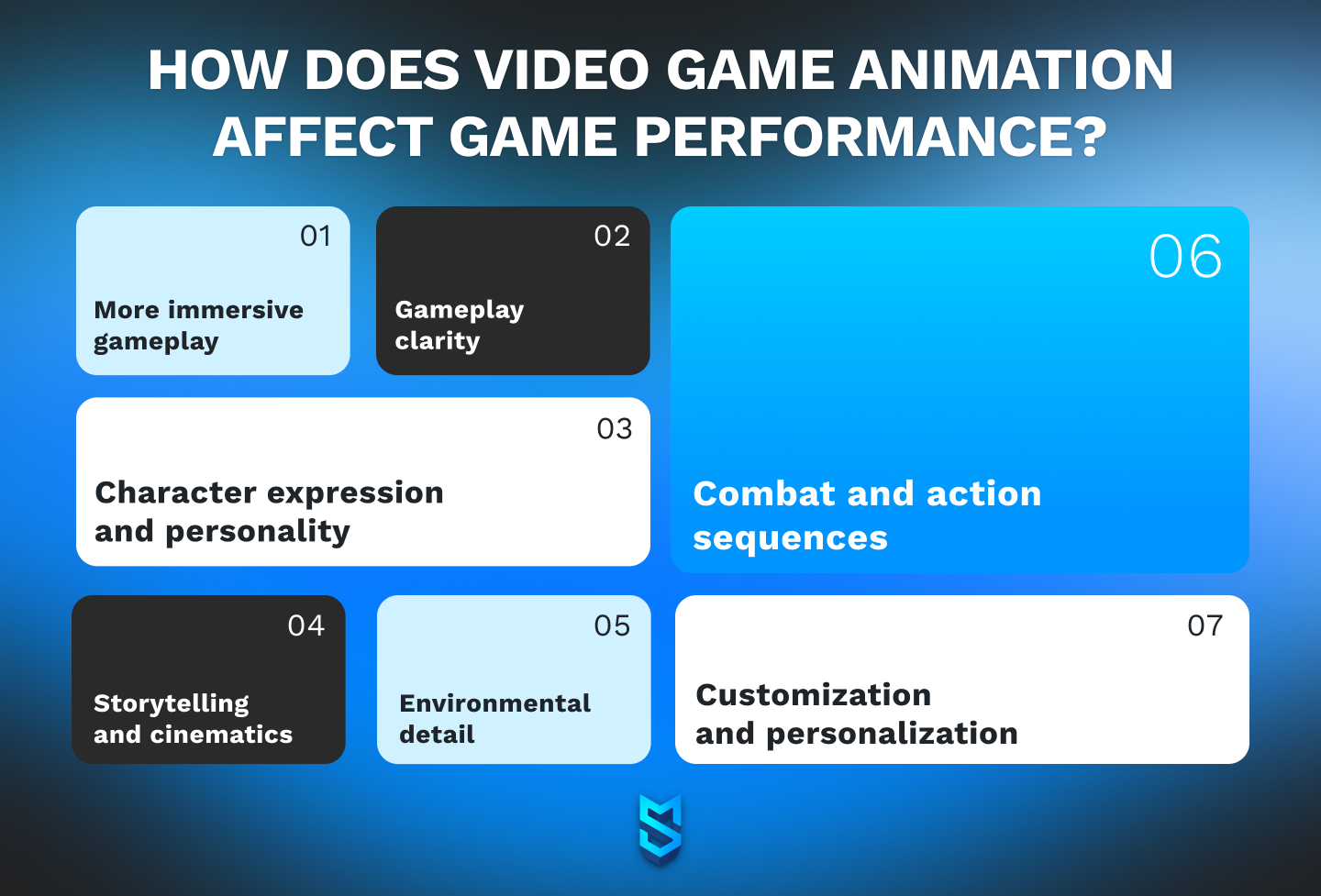
The short and simple answer to this question is that animation makes games more fun, of course. However, if we were to dissect the whole into parts, here are some of the main things that become better when mobile video game animation gets involved.
More immersive gameplay
Fluid and realistic animations help players immerse themselves in the game world by making characters and environments feel more lifelike. This immersion is essential for creating emotional connections and engaging experiences.
It’s especially noticeable (and important) in action games, of course. But even in a 2D visual novel-type game with limited animation, having a character smile or take something out of their pocket makes players more engaged.
Character expression and personality
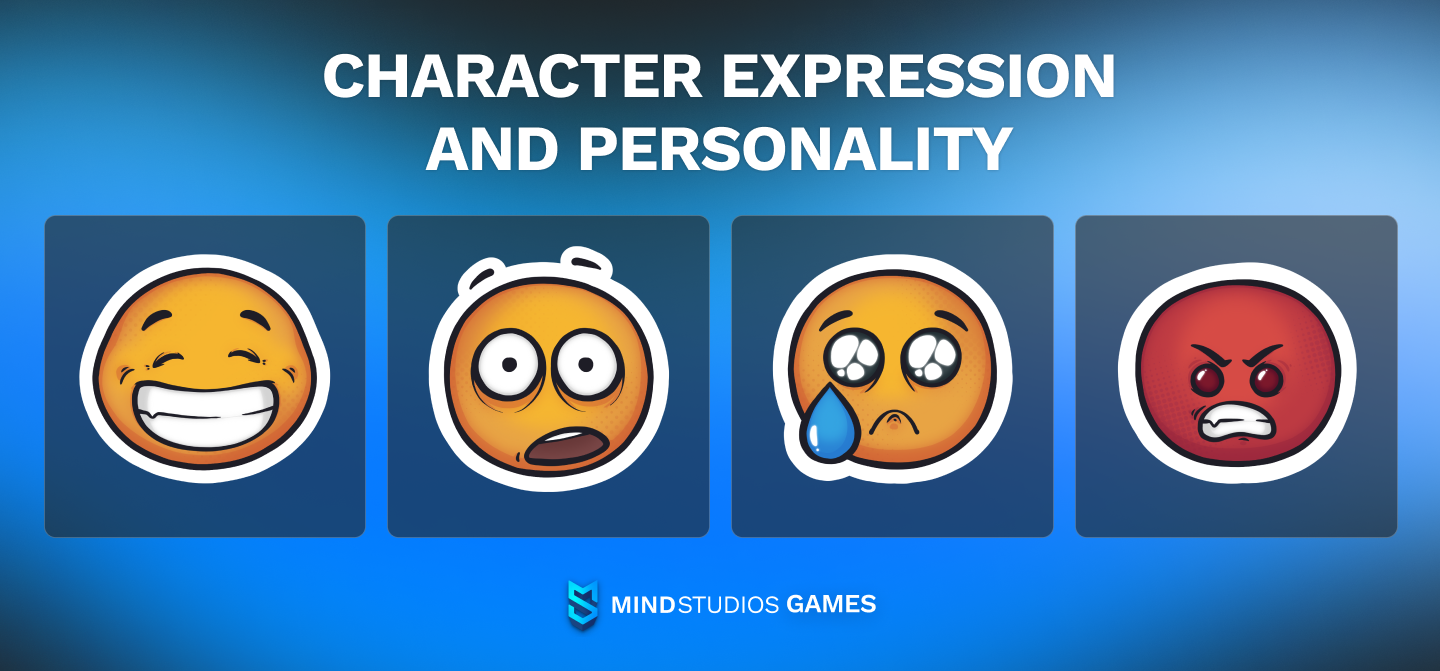
Speaking about characters smiling :) Animation allows developers to convey the personalities and emotions of characters through their movements and gestures. Whether it's a tiny smile or a boisterous laugh, the stride they walk with, an expression made in a tense moment, animations bring characters to life and make them more relatable.
Gameplay clarity
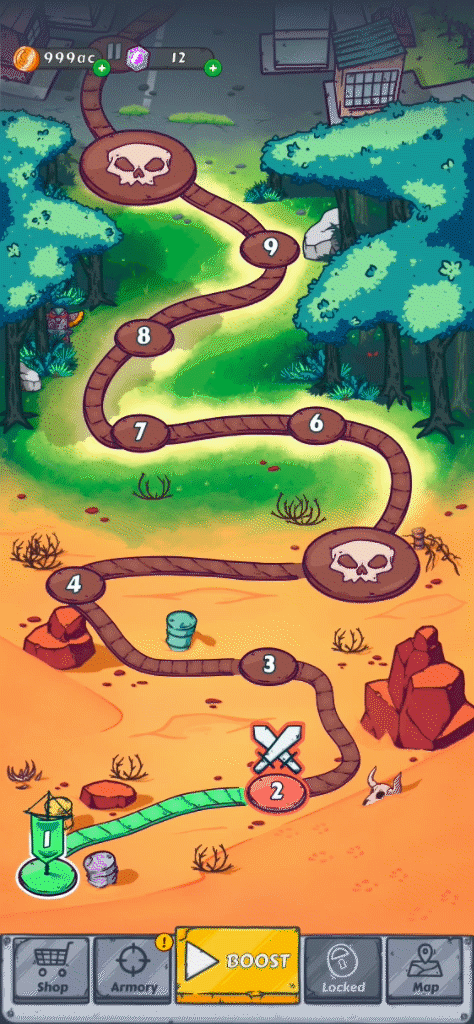
Clear and responsive mobile game animation helps communicate gameplay mechanics to the player. Whether it's indicating a successful action, conveying damage, or signaling the start of a special move, animations provide visual feedback that enhances the player's understanding of the game.
Storytelling and cinematics
If you’re building a narrative-driven game, you might need cinematic scenes. Even if your game itself doesn’t offer a lot in terms of animation — again, a visual novel game can be an example — an animated cinematic scene here and there will help advance the plot and develop characters.
Environmental detail
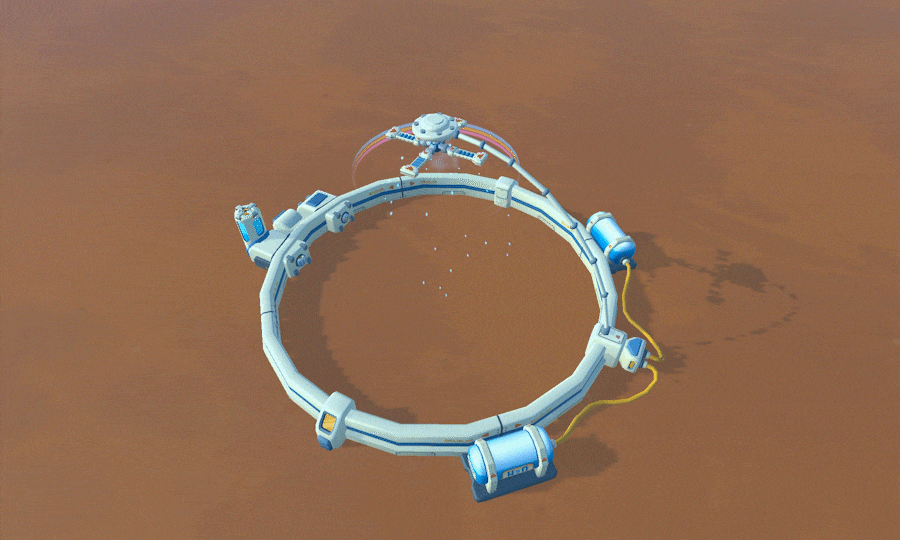
Animation extends beyond characters to include environmental elements such as weather effects, foliage movement, and dynamic lighting. These animations contribute to the atmosphere of the game world, making it feel more dynamic and immersive.
Combat and action sequences
In action-oriented games, fluid animations are essential for creating satisfying combat and action sequences. Responsive controls combined with visually impressive animations make combat feel impactful and enjoyable for players.
Customization and personalization
Many games offer customization options for characters and avatars these days, allowing players to tailor their appearance and animations to their preferences. This level of personalization enhances player engagement and investment in their in-game personas.
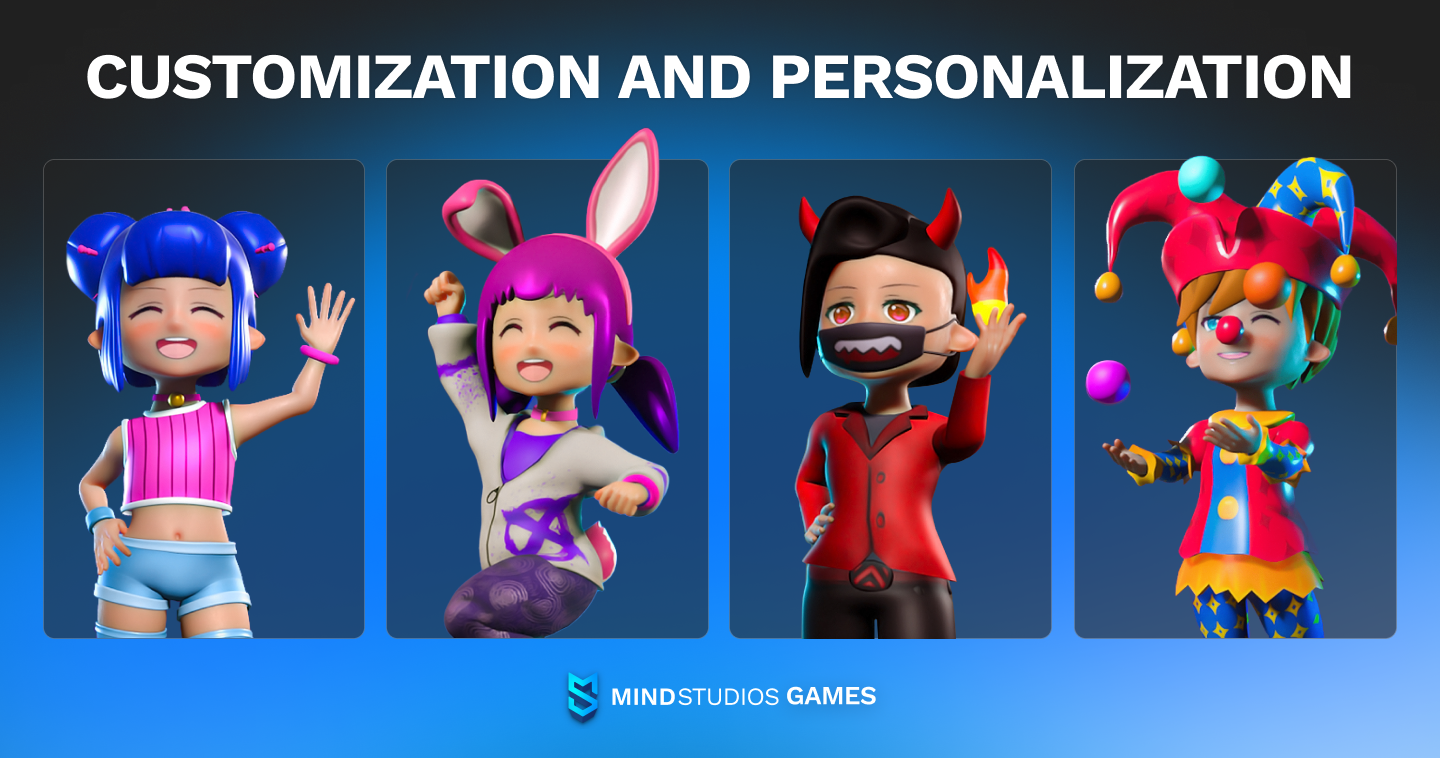
Types of video game animation
What can be animated in video games? The obvious one is characters. But that’s not all. Animation in video games can be applied to everything. We have four main types of animation in game development:
| Character animation | Again, that’s the most obvious one. You can apply walking and running animation to your characters, make them pick up items, swing a sword, move their face when speaking, change facial expressions, and a lot more. |
| Object animation | When your character picks up an object, the animation is applied to both the character and the object. Opening chests to find treasure is also object animation. A book thrown out of the window, a box pushed around, coins falling on the ground — those are all objects in your game you can animate. |
| Environmental animation | If your game takes place outdoors, animated surroundings will be considered environmental animation. This includes things like trees and grass, movement of celestial objects and the light they shine, water flowing in the river or falling from the sky, etc. |
| VFX animation | Visual effects include sparks and sparkles, explosions, smoke, wind whirling, water ripples, and more. Basically, they’re small effects that enhance the game’s visuals. |
| Animated UI | This is more noticeable in PC and console games, but mobile game developers like us also use animation in game design and UI. When a menu is open and the player pushes a button, an animated push is more fun than a non-animated one. Add some sound and vibration there, use it for IAPs and rewarded ads — and you have a chance to slightly increase how much players tap on them. That’s because animation adds to immersion. |
Any of those animation types can also be 2D or 3D — regardless of the style you choose for your game. As in, you can use 3D game animation to move a 2D character or object in a 3D environment. Likewise, both 2D and 3D characters can be made to only move in a two-dimensional space.
Although, most of the time, developers animate games under the same style as art.
6 key animation principles used in video games
In truth, there are numerous things that need to be considered when you’re getting into animation for video games. There are more than six. However, if we were to try to list all of them, this article wouldn’t see an end any time soon. So we’ll cover here the fundamentals our animation specialists follow.
#1 Timing
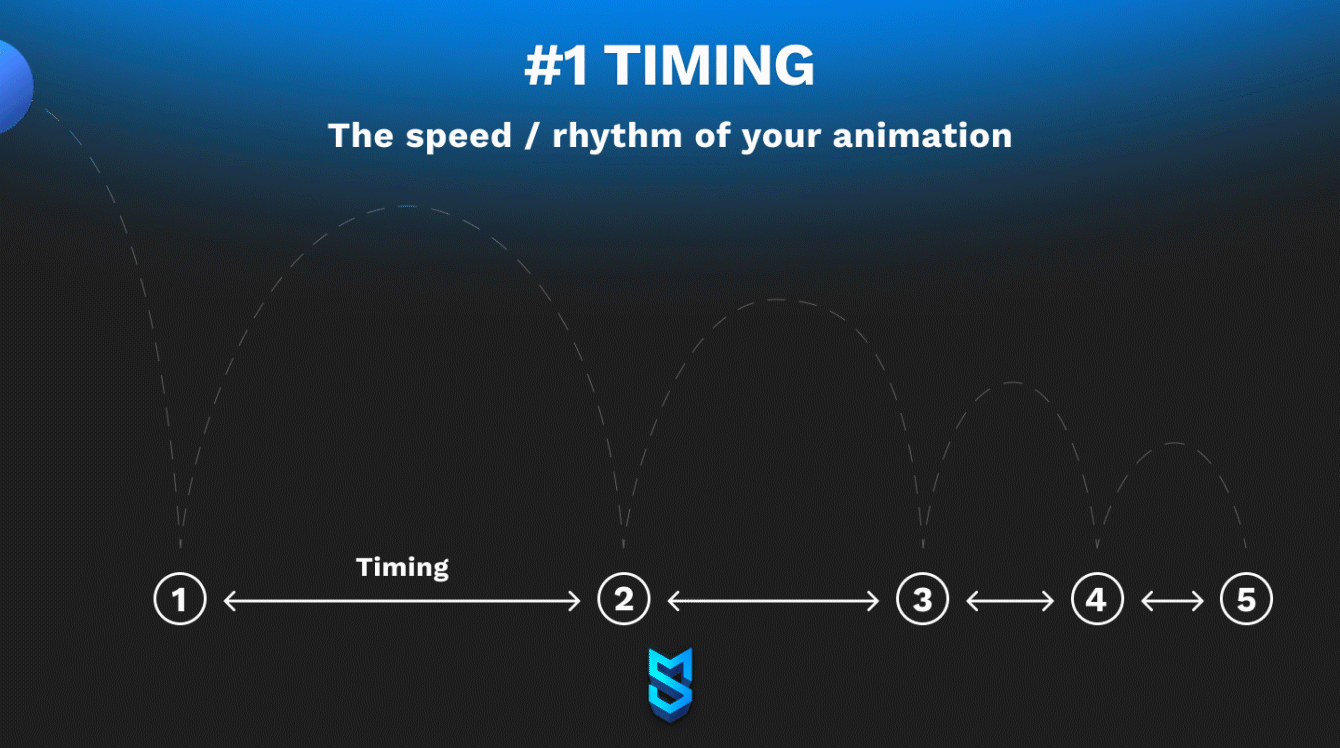
Timing refers to the speed and rhythm of movements within an animation. It determines how fast or slow objects or characters move from one pose to another. Timing is crucial for ensuring that actions feel responsive and appropriately paced, especially when it comes to mobile games — considering the limited screen space and short attention spans of mobile users. Smooth and well-timed animations enhance the overall gameplay experience by providing a response and feedback loop for player actions.
#2 Spacing
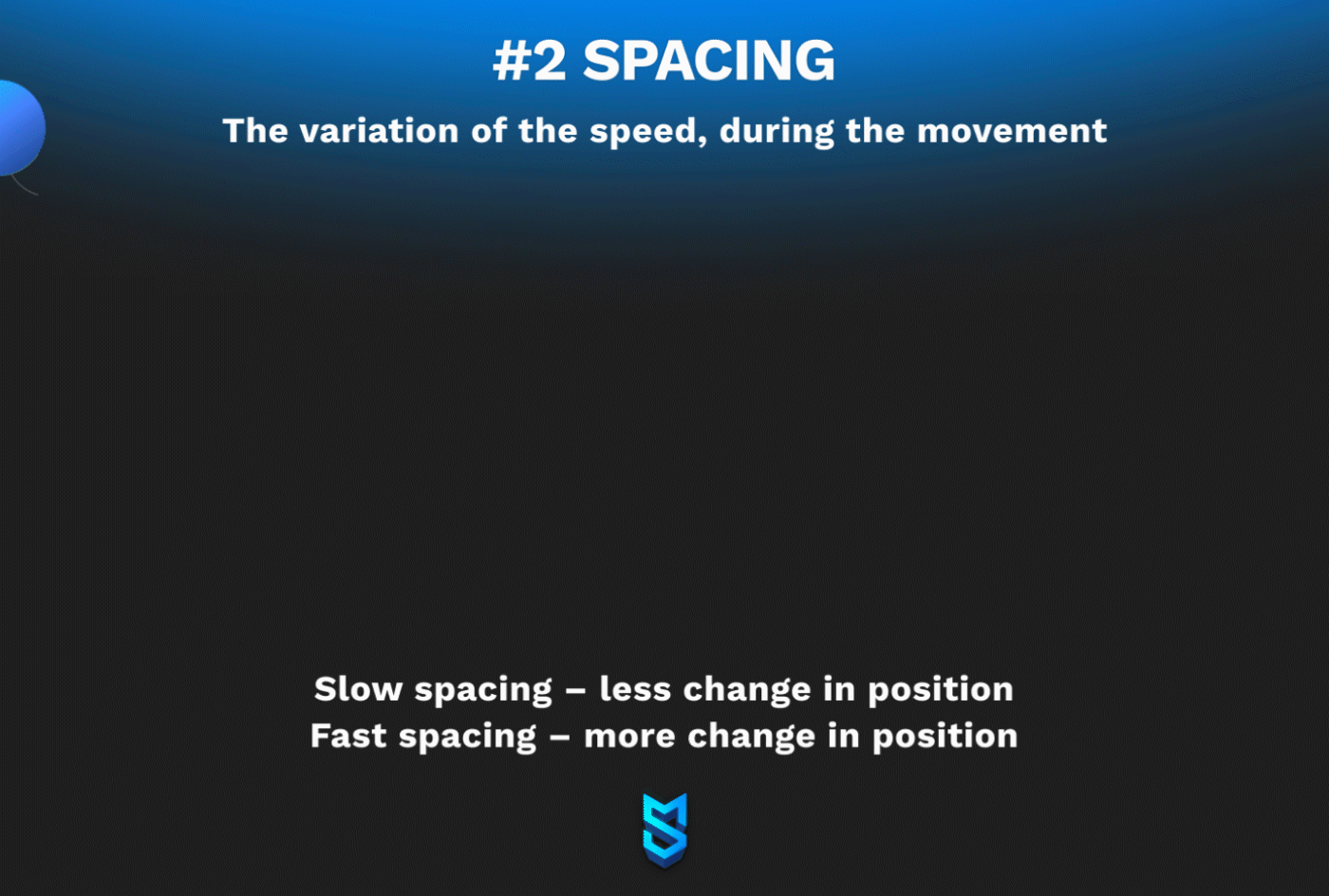
Spacing means the placement and distribution of keyframes or poses along the animation timeline. It determines the distance and trajectory that objects or characters travel between poses. Spacing is used to create smooth and natural movements, particularly in character animations and transitions. Proper spacing helps avoid abrupt changes and ensures that animations flow seamlessly from one frame to the next.
#3 Easing
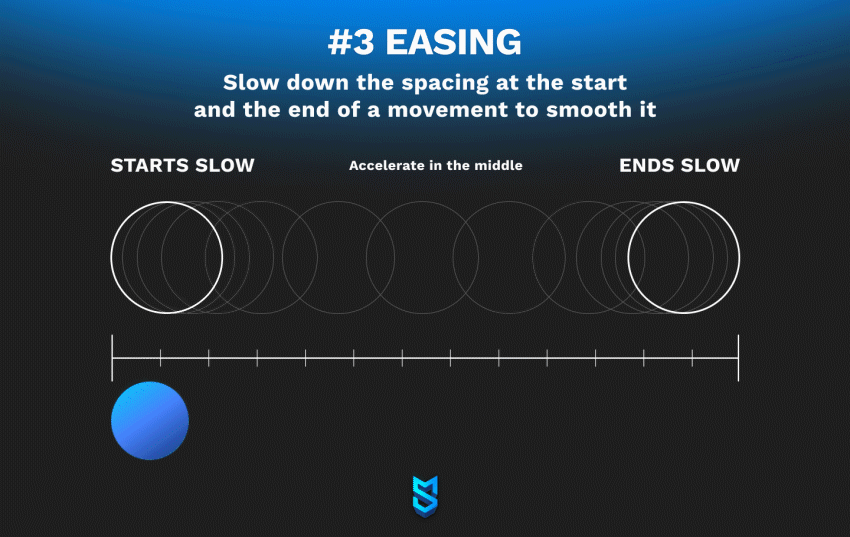
Easing, also known as interpolation, is the acceleration and deceleration of movement within an animation. It adds a sense of realism and weight to objects or characters by mimicking the way things move in the real world.
Imagine a person running full speed and hitting a wall because they didn’t slow down gradually. Satirical cartoons love this effect, a character getting splattered on a wall or ground. Even if there’s no wall in the way of your characters’ movement, the lack of easing will make it look like the stop was unnatural, too abrupt. Like there is, in fact, a wall, but it’s invisible.
Easing is used to make movements feel more natural and organic, especially during character actions like running, jumping, and attacking. By applying easing curves to keyframe transitions, animators can create smoother and more lifelike animations that enhance player immersion.
#4 Anticipation
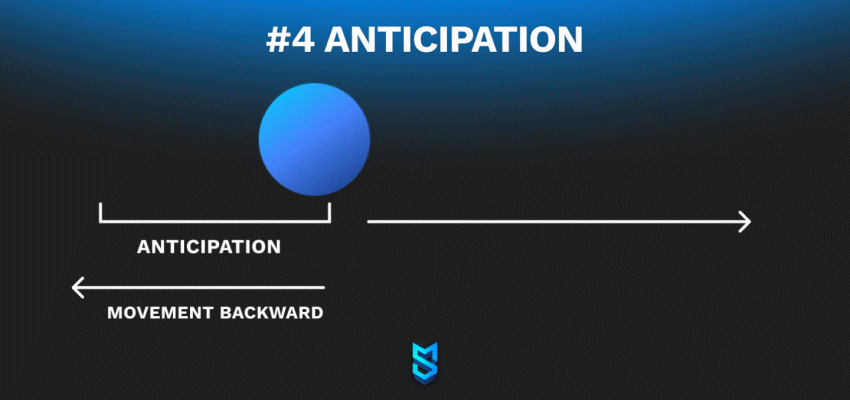
Anticipation is about preparing the audience for an upcoming action by exaggerating the movement or pose beforehand. It helps build excitement, making actions feel more impactful and satisfying.
In video game animation, anticipation is used to foreshadow player actions and provide visual cues for upcoming events or interactions. For example, a character might crouch down before jumping, indicating to the player that a jump is about to occur.
#5 Follow-through
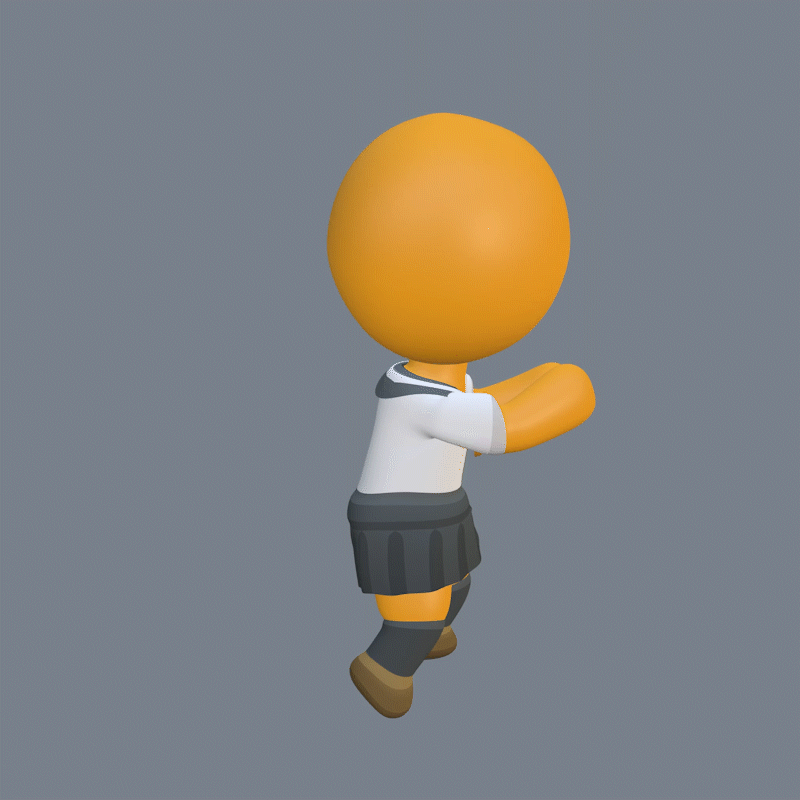
Follow-through, also known as overshoot or settle, refers to the continuation of movement after the primary action has occurred. It adds secondary motion and enhances the sense of weight and momentum when we make animations. Follow-through is used to add detail and finesse to character movements.
For example, after a character stops after a sprint, you can add an animation of them regaining balance — a slight movement forwards and then backwards for the upper body. This will add realism and detail to the motion.
#6 Squash and stretch
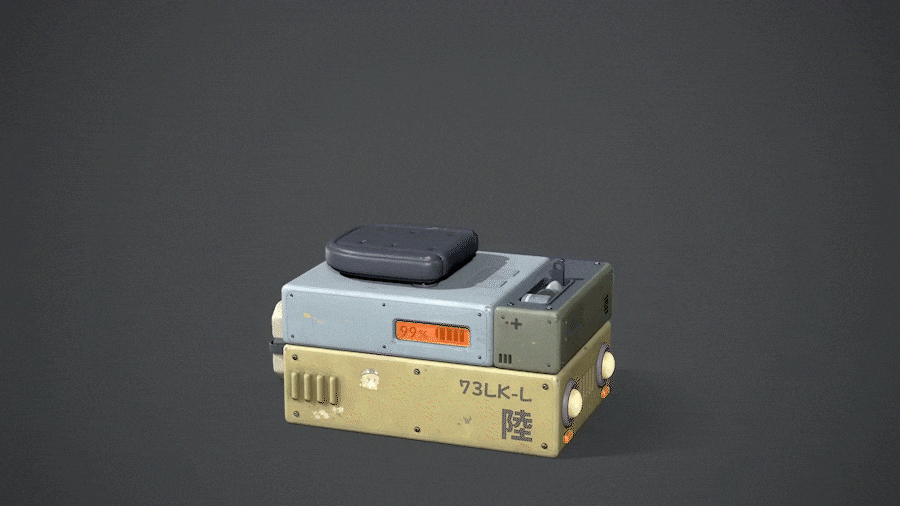
Squash and stretch involves deforming objects or characters to convey elasticity and flexibility in their movements. It exaggerates motion and adds visual interest to animations. These principles are used to convey impact and emphasize key moments in gameplay. For example, when a character jumps, their body might squash as they crouch down and stretch as they leap into the air, enhancing the sense of energy and excitement.
Animation techniques used in video game development
So, how do we use animation in mobile video games? Is there a single correct way? Of course not. Depending on the style of your game’s art, the game’s overall complexity, and sometimes even your budget, the techniques applicable for game design animation will vary.
Sprite animation
This is the technique used for 2D animation exclusively, and it’s also the oldest video game animation technique in existence. (It’s been around since the 1970s.)
With sprite animation, a character in a game is made up of several individual images (sprites) representing different parts of the body or different poses. By rapidly displaying these images one after another, we create an illusion of movement.
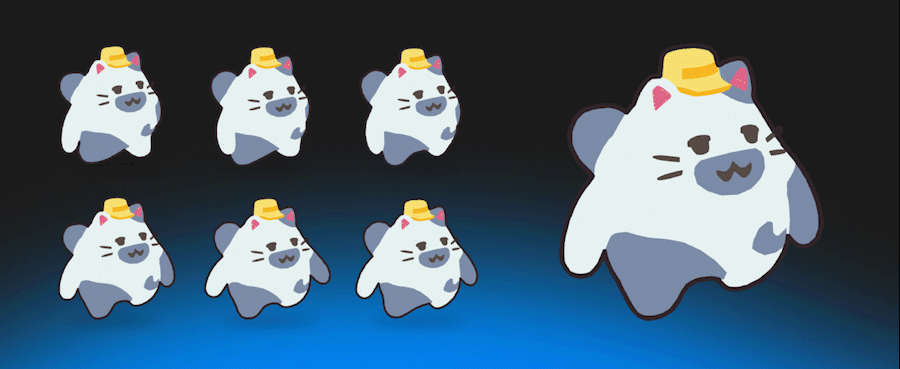
Sprite animation isn’t exclusive to characters, of course. It’s used for any animation, including even VFX.
Keyframe animation
Keyframe animation, sometimes also called pose-to-pose animation, is the most popular animation technique in 2D games, though it has more uses than just 2D games.
Basically, to animate via keyframes, the artist animator creates the asset’s looks at starting and ending points — that’s the main keyframes. After that, they set up timing — how long the action takes — and create notable poses at specific points between the starting and ending keyframes.
Depending on how smooth you want the animation to be, there might be only a few keyframes at loose intervals, or they can be densely packed with a keyframe for each miniscule shift.
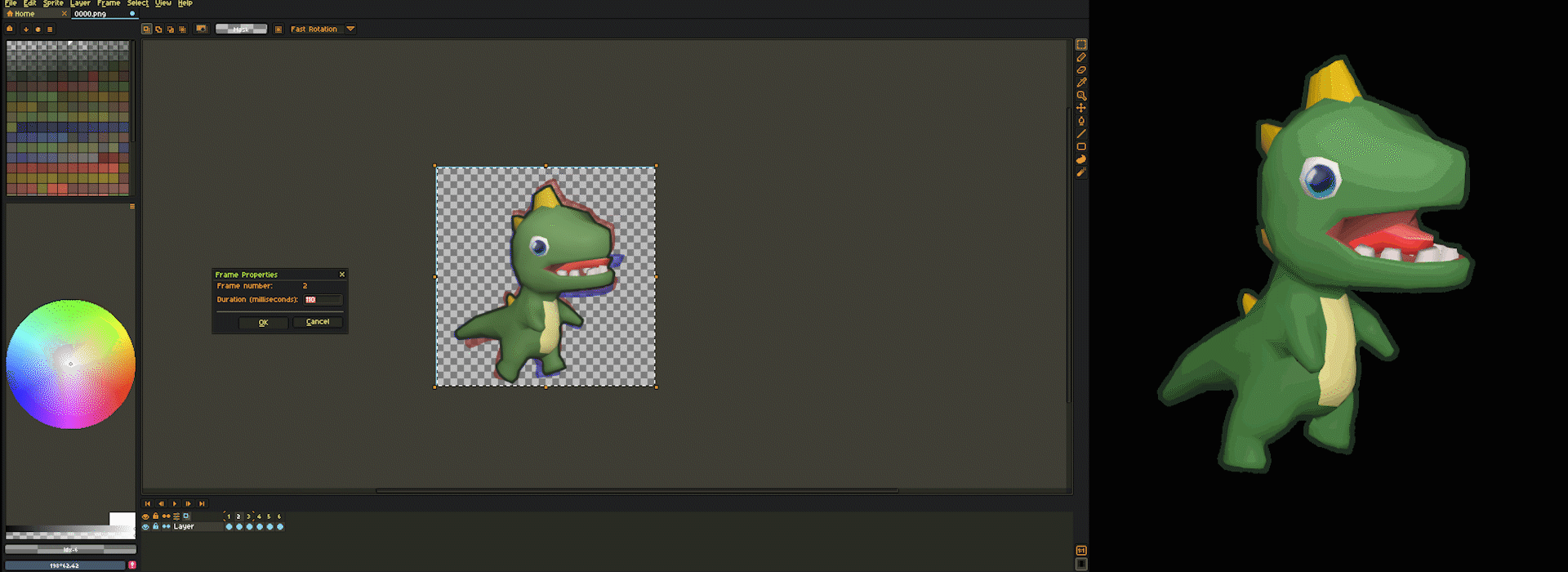
These days, artists don’t really need to draw each tiny frame by hand — a computer algorithm can do that instead. The artist only needs to provide several most important poses for the machine to rely on.
Skeletal animation
As an alternative to animating each part of a character separately like in sprite animation, or drawing multiple frames for keyframe animation, there’s skeletal animation.
Skeletal animation — also called rigging — involves creating a digital skeleton for the character. Animators then move and rotate the bones of this skeleton, and the software automatically deforms the character's mesh to match the skeleton's movements. This technique allows for more fluid and realistic animations while only drawing the character once.
When using skeletal animation for mobile games, the trick is to make the rig simpler. With a simpler rig, the animating process takes less time, and it’s also easier to optimize the animation in the engine later.
— Andriy, lead 3D artist at Mind Studios Games
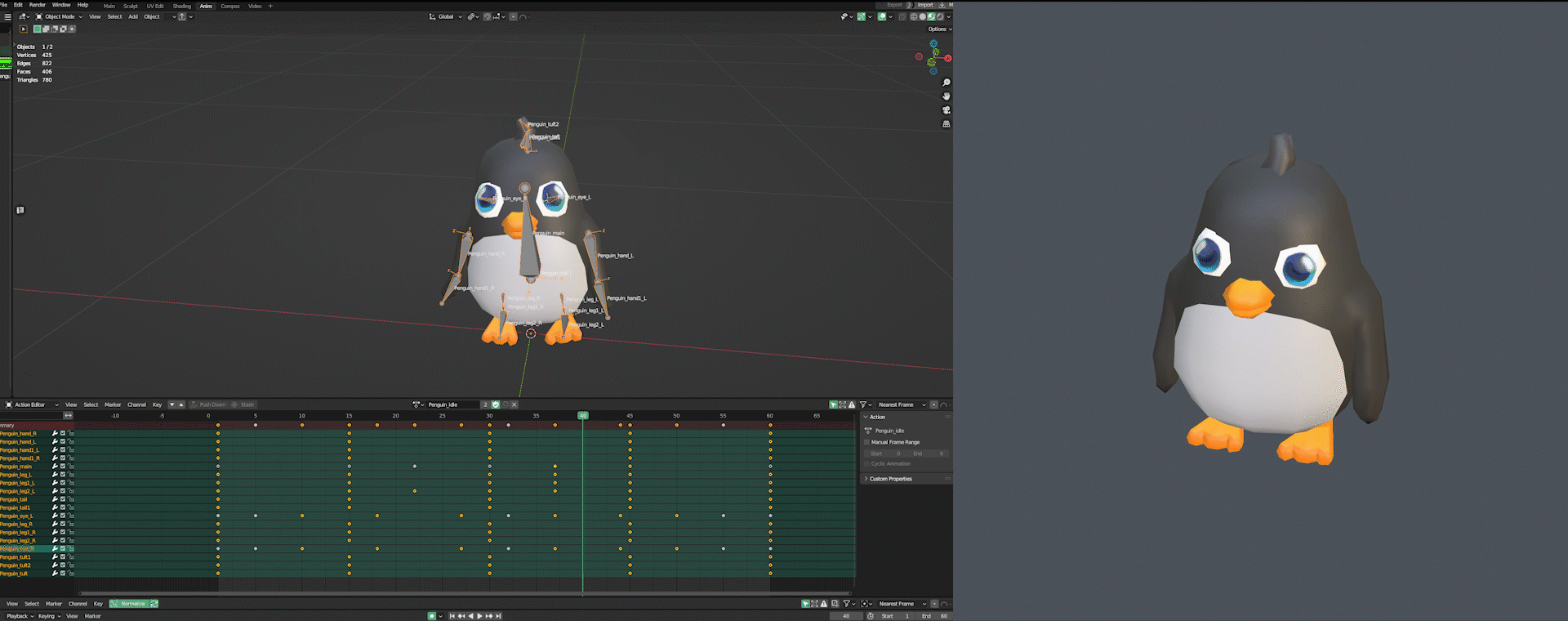
It’s most frequently used for 3D game animation, although using skeleton technique for 2D animation is also possible.
Motion capture
Now this is an expensive technique mostly used for AAA video games. Motion capture involves actual people wearing special suits covered in sensors and cameras capturing their movements. This data is then translated into digital animations for characters in games.
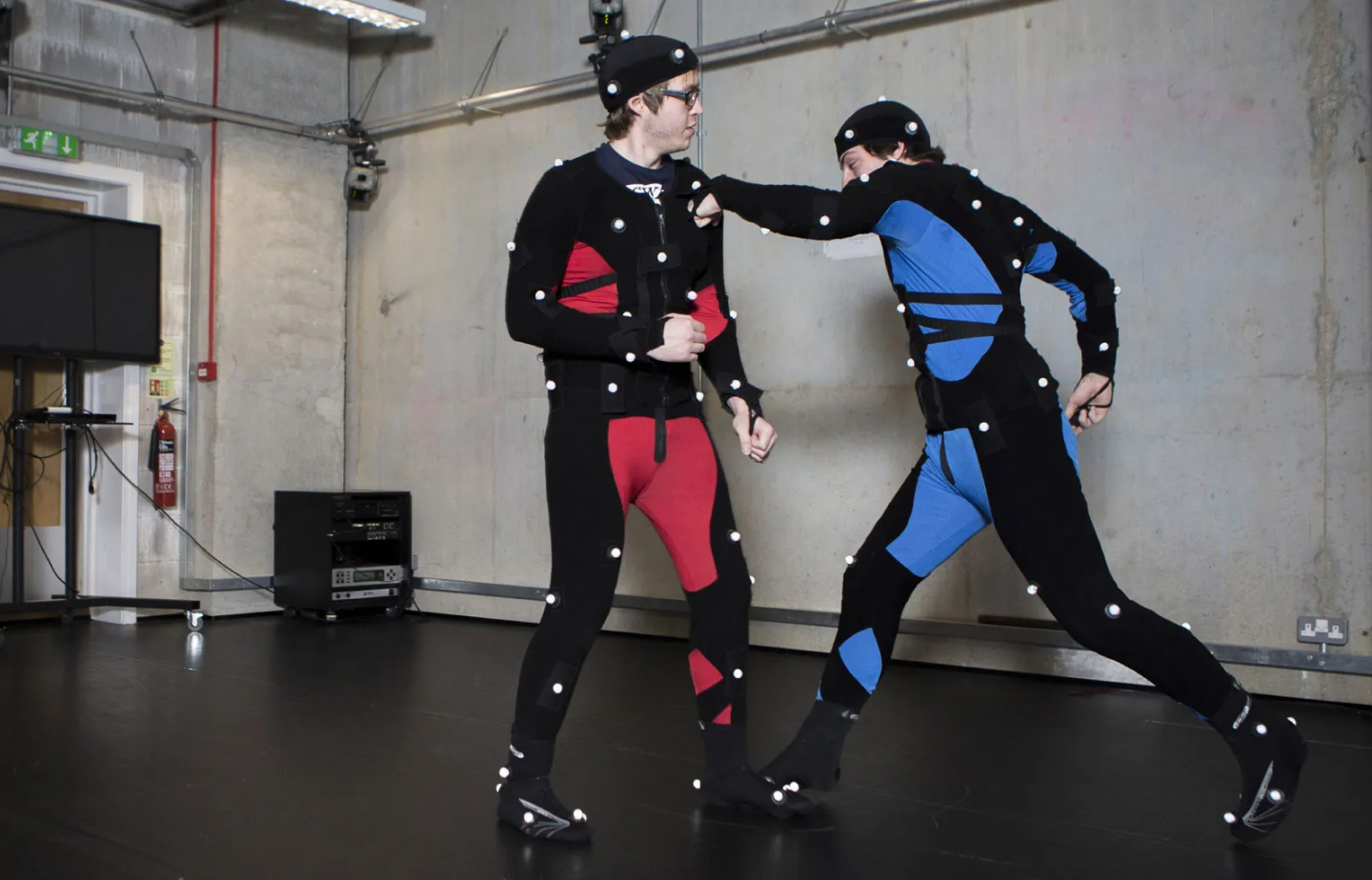
[Image source: Britannica]
Motion capture allows for incredibly lifelike animations because they're based on real human movements. Besides the big movement, it’s also incredibly useful for translating facial expressions into game — something all other types of animation struggle with.
Particle effects
Now, this is from the realm of VFX — the visual effects. Particle effects involve simulating small, often short-lasting visual elements like smoke, fire, sparks, drops, or magical spells. These effects are created by generating and manipulating thousands of individual “particles” (tiny dots) that move and behave according to predefined rules.
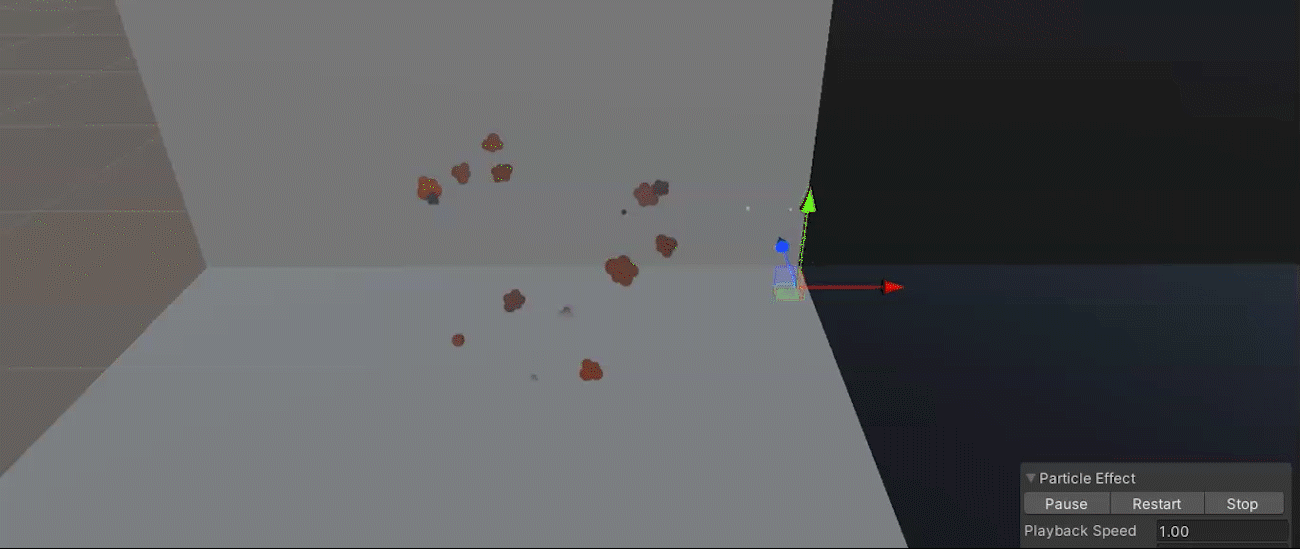
These are the most widely used techniques in animation for video games. Each of them has its own peculiarities and most suitable use cases. An experienced animation specialist will help you choose the proper technique based on your game description.
Here’s a hack our artists employ in their processes:
For general and small animation, we use Mixamo, it’s a great tool that saves us a ton of time and effort that we can instead dedicate to more complex and unique animations.
At the same time, when I do need a unique animation that has few if any references, I take out my smartphone, put it on a tripod, and record the moves. It’s quite fun, and there’s no better way to know how to animate a move than to perform it yourself.— Andriy, lead 3D artist at Mind Studios Games
Challenges and considerations
Animation comes with special needs and requirements for any platform, but animation in mobile video games has its own flavor, and oftentimes that flavor is bitter. As a company specializing in mobile games, we’ve encountered a range of challenges, and found solutions for them — via trial and error as well as by seeking advice from the animation community.
Here are some things that can become a headache for mobile game animators, and how to deal with them.
Performance optimization |
The ever-reigning king of mobile game dev challenges and pitfalls, performance optimization is frequently the biggest hurdle. Mobile devices have limited processing power compared to PCs or consoles, so optimizing performance is crucial to ensure smooth animation without draining battery life or causing lag. What do we do? We use techniques like culling (rendering only what's currently visible), occlusion (hiding objects that are obscured), and reducing level-of-detail for objects in the distance. We do this to minimize the number of objects being rendered at once. Using hardware acceleration and graphics APIs like OpenGL ES or Vulkan can also be of help for efficient rendering. |
Resource management |
Efficiently managing resources like textures, animations, and audio files is essential for minimizing load times and maximizing performance. What do we do? We work with texture atlases to combine multiple textures into a single image, reducing draw calls and memory overhead. Then we implement asset caching to reuse resources instead of reloading them repeatedly. |
Device compatibility |
Mobile games need to run efficiently on a wide range of devices with varying processing capabilities, screen sizes, and resolutions. What do we do? We test. There’s nothing else to do about it. Test religiously and on as many different devices as possible. If there’s no device at hand, there are emulators and simulators for testing. Not as good as the real device, but they work. We also use responsive design principles and scalable assets to adapt to various screen sizes and resolutions dynamically. |
Battery life |
Continuous animation and rendering can drain the device's battery quickly, so optimizing energy consumption is important for mobile video game animation. What do we do? For animation, we implement dynamic frame rate adjustment based on device performance and battery level. We try to choose the most energy-efficient rendering techniques and avoid excessive use of CPU or GPU resources. |
Memory constraints |
Mobile devices have limited RAM and storage space, so managing memory usage is critical to prevent crashes and performance issues. What do we do? We optimize our assets by compressing textures without loss in quality. We utilize asset streaming to load resources dynamically as needed, rather than loading everything into memory at once. |
By addressing these challenges and implementing optimization strategies tailored to the specific requirements of mobile game development, we can create engaging and immersive experiences that run smoothly on a variety of devices.
Best practices for mobile game animation
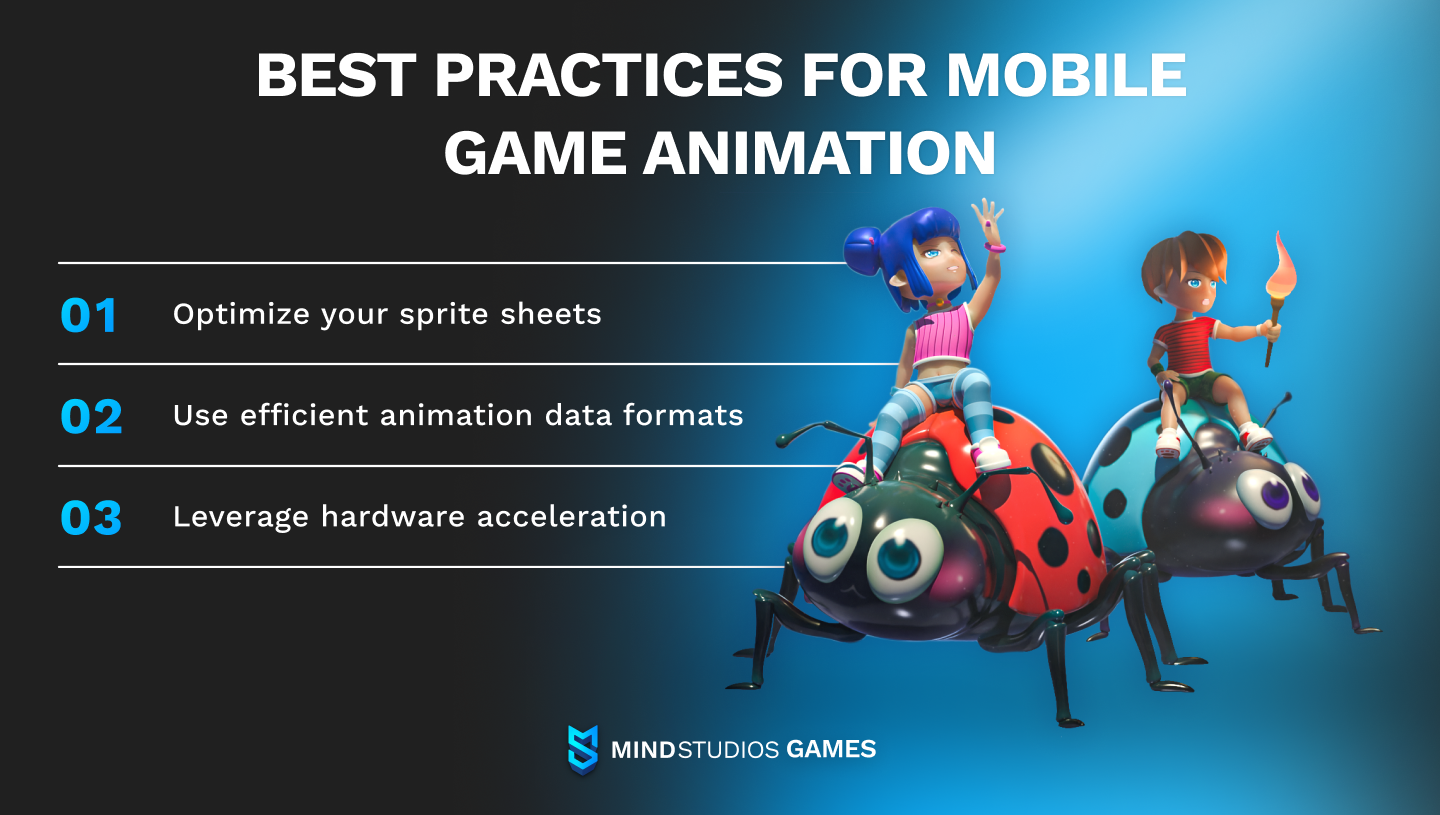
Besides addressing the challenges, there are also recommendations for quality animation in mobile video games. They’re varied and numerous, as everything in life is, but there are those that we believe should be followed religiously by any mobile game animation specialist.
Besides testing, which we’ve already mentioned above in the challenges section, there are three main practices we believe are useful even for animation novices.
#1 Optimize your sprite sheets
Sprite sheets contain multiple animation frames packed into a single image. They’re made to reduce the number of draw calls and to improve rendering performance. When creating sprite sheets:
- Arrange frames efficiently to minimize wasted space.
- Use texture compression formats like PNG or WebP to reduce file size without sacrificing image quality.
- Consider using tools or libraries that automate sprite sheet generation and optimization.
#2 Use efficient animation data formats
Choose animation data formats that are optimized for mobile platforms to minimize memory usage and loading times. Some efficient formats include:
- JSON: Lightweight and human-readable, suitable for storing animation data in a structured format.
- Binary formats: Compact and fast to load, reducing file size and memory overhead.
- Formats specific to game engines: Utilize animation data formats provided by popular game engines like Unity or Unreal Engine for seamless integration and performance optimization.
At Mind Studios Games, we’re building our games with Unity, which has its own animation functionality and imports files in .fbx or .obj formats easily. However, Unity is also compatible with Blender, 3ds Max, Maya and other software.
#3 Leverage hardware acceleration
Last, but not the least important, take advantage of hardware-accelerated graphics rendering to achieve smooth and responsive animations. To optimize hardware acceleration:
- Use graphics APIs like OpenGL ES or Vulkan that support hardware acceleration on mobile devices.
- Implement batching and instancing techniques to reduce draw calls and efficiently utilize GPU resources.
- Offload CPU-intensive tasks like physics calculations or AI processing to the GPU whenever possible.
Overall, we always try — and advise everyone else — to design animations that respond to user input and enhance the overall gaming experience.
Smooth transitions and easing functions make animations feel natural and fluid. Visual feedback for player actions improves responsiveness and engagement. Particle effects, lighting, and shaders add depth and polish to animations, making them visually appealing and immersive.
All this helps make animation for video games in a way that enhances the gaming experience, not annoys players with lagging. And if animation isn’t the only good thing about a game, then this game will captivate its audience for a while.
Case studies and examples from Mind Studios Games
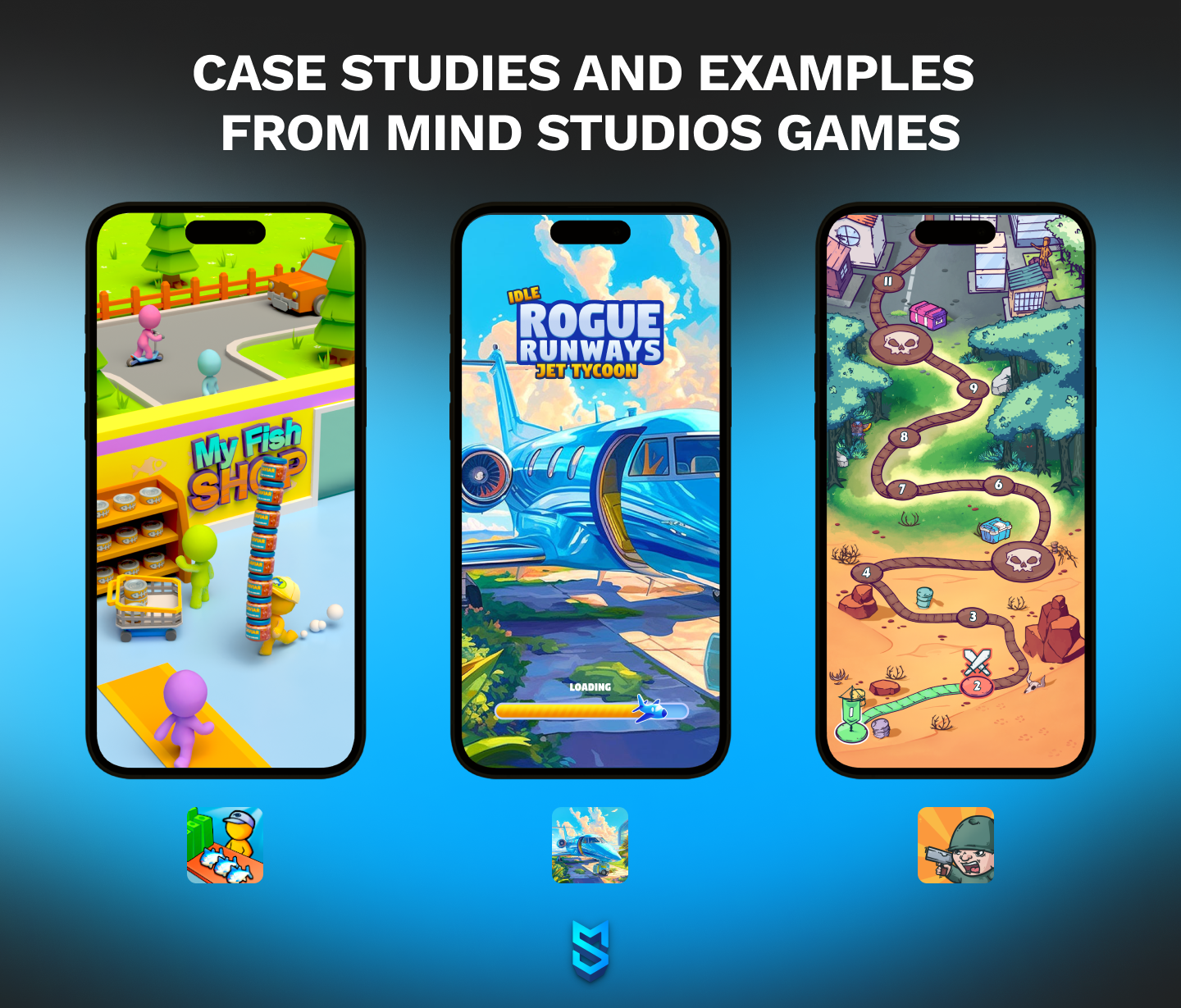
In our years on the mobile game development market, Mind Studios Games has created dozens of mobile games and tried our hand in a variety of genres, mechanics, and complexities. Thanks to this, we’ve acquired a range of animation skills applicable to any kind of game.
Did you know that the jumping mechanic is one of the hardest things to do properly when it comes to video game animation? There are so many things to consider there that even some AAA games decide to forego it. We did jumping mechanics for our Beetle Riders game — players can have their beetles jump to catch more rewards, as well as to avoid obstacles and opponents.
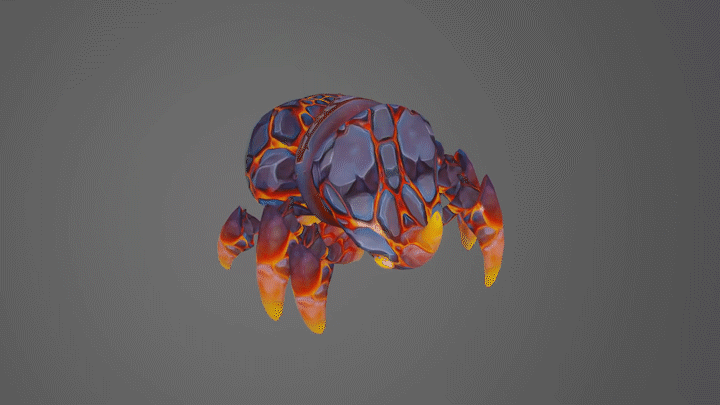
Among our 2D games, animation-wise, we’re pretty proud of our Troop Tycoon, where we did a range of animated actions. Being an idle game, Troop Tycoon for the most part features short looped animations. However, we approached it with the mindset of seasoned idle game developers: in a game where a player doesn’t take all that many actions, the visuals need to be entertaining to watch and animation should be eye-pleasing.
So, we animated characters to reflect bits of personality, gave them a variety of tools, and tried to make them memorable. We think they came out quite nice 😀
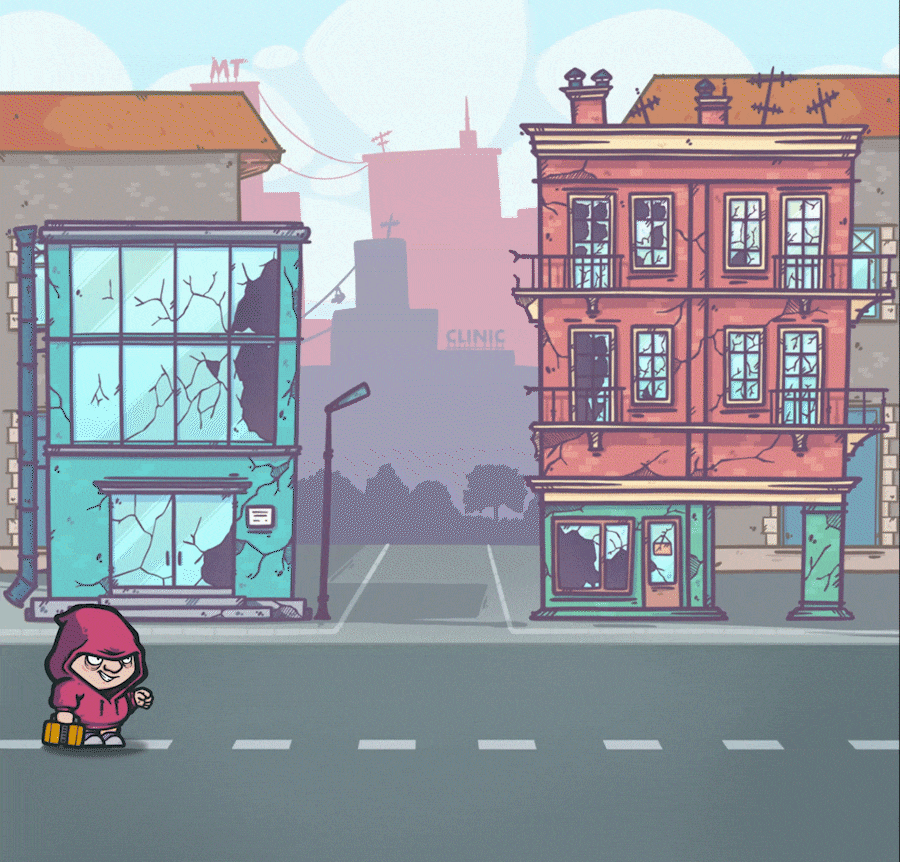
Conclusion
Animation in video games is a potent attention grabber, able to help keep players in the game and add to your well-thought-out mechanics, art, setting, and narrative. Even the simplest-looking game with stickmen for characters will be heaps more enjoyable for players when said stickmen move smoothly and perform small but distinct actions.
With proper gaming animation, you can offer your players more immersion — regardless of the type and genre of your game. And with the advancement of technology, animation in mobile video games is already close to — and sometime on par with — its PC/console counterpart.
If you wish to up your game’s success chances, hire skilled professionals who know how to make animations that are fluid, seamless, and eye-catching.
Mind Studios Games has such specialists. Check out our games or get in touch with us directly so that we can show you what we can do (which is, we believe, quite a lot) 😏

